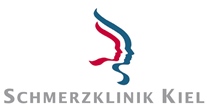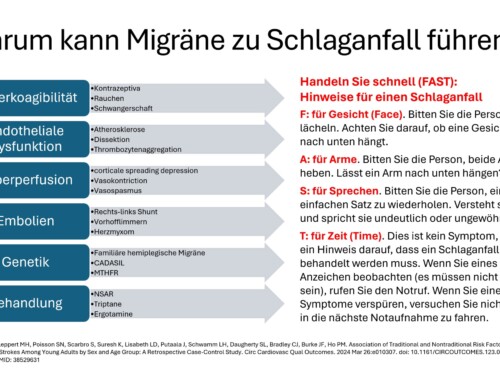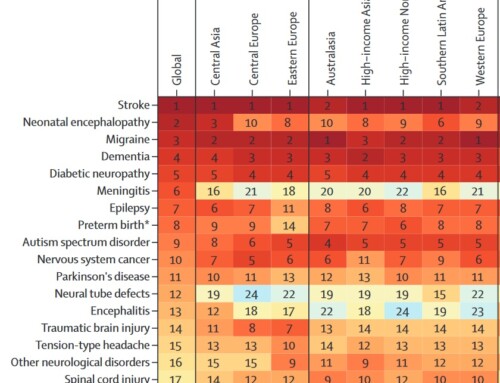recent resolution by the Federal Joint Committee (G-BA),  the calcium antagonist verapamil will in the future even beyond its approval under statutory health insurance for the indication cluster headache . The Federal Joint Committee has included the drug in the Medicines Directive.
the calcium antagonist verapamil will in the future even beyond its approval under statutory health insurance for the indication cluster headache . The Federal Joint Committee has included the drug in the Medicines Directive.
Not all manufacturers have issued a statement. Therefore, only the preparations from the manufacturers 1A/Hexal/Sandoz, Abbott, Aliud/Stada, Basics, Heumann and Wörwag can be prescribed. Preparations from other manufacturers may not be prescribed with a prescription.
On the one hand, the decision is very welcome and long overdue. On the other hand, it leaves many questions unanswered and leads to new uncertainties in practical therapy. Despite international consensus that cluster headaches must be dosed individually and high-dose therapy is necessary, especially for severely affected patients, an initial standard daily dose of 120 milligrams is specified, which can be increased to a maximum of 360 milligrams. According to our experience and looking back at the literature, only a small proportion of patients can be effectively treated with this dosage. Cluster headaches are nicknamed “suicide headaches”; patients despair because of the pain and occasionally take their own lives without adequate treatment. From our point of view, the current dosage limit does not appear to be a measure in the interests of patient protection. The resolution does not provide operational criteria for ECG monitoring and there is no reference to the use of sustained-release preparations.
Our experiences with verapamil in the treatment of cluster headaches are described below. It should be taken into account that due to insufficient controlled examinations, the application in specialized centers is based on many years of experience and must be individually adapted.
From a practical health insurance perspective, providing cluster headache patients with verapamil was not a problem, even without approval. From my personal experience, but also from the experience of many colleagues, I am not aware of a single conflict when prescribing verapamil for the prophylaxis of cluster headaches. In this respect, the care of cluster headache patients with verapamil was not difficult or even limited, even without approval.
The decision now officially approves verapamil for the prophylaxis of episodic and chronic cluster headaches in adults aged 18 and over. Under point 1. b) the treatment goal is stated as “a clinically relevant reduction (ie at least 50%) in the frequency of attacks” of cluster headache. In my opinion, this reduction transferred from the prophylaxis of migraine attacks is not effective for cluster headaches. Due to the severity of the attacks, the treatment goal for cluster headaches must be freedom from attacks. If you look at the approval from the perspective of the practicing practitioner who is now controlling the course of treatment based on the approval text without any detailed knowledge of the relevant literature, he will assume that a corresponding 50% reduction is accepted. However, reducing 60 monthly attacks to 30 is not a clinically relevant therapeutic goal that is acceptable for the affected person.
Dosage instructions are given under point 1. f). Oral monotherapy is recommended with an initial dose of 120 mg, which can be increased to 360 mg. An incongruity in the approval text can already be seen in the next sentence: “The dose of verapamil that is necessary to completely suppress cluster headache attacks varies greatly from person to person and can also vary intra-individually. While point 1. b) states that the treatment goal is at least a 50% reduction in attack frequency, this is now correctly referred to as complete suppression of cluster headache attacks. This will lead to further confusion for practitioners in standard care.
From a practical point of view, I do not think it is justified to specify an initial daily dose of 120 mg as a standard. From my personal experience and the literature, with this low dosage, therapy effectiveness can only be expected for a very small proportion of patients. Many patients will suffer unnecessary cluster attacks with this insufficient dose; I do not consider a standardized setting in this form to be adequate. It is also not specified how the dose can be increased to 360 mg and during which periods. Here too, the treating doctor is left to their own devices. Finally, it is not stated whether unretarded or sustained-release verapamil should be used. From a cardiological perspective, the use of unretarded verapamil has been outdated for many years. Unfortunately, this knowledge has only been reflected in neurological guidelines and application practice in a few individual cases.
Under 1. g) it is stated that the therapeutic effectiveness can only be assessed after a treatment period of one week at the earliest. On the one hand, this is not true. It usually takes up to a week for the effect to occur with adequate dosage. However, some patients show an effect even before a week's notice. On the other hand, the effect depends on the dosage and the onset of effect also on initial accompanying therapies, such as corticosteroids or 5-HT agonists. In my opinion, just starting with verapamil 120 mg and then waiting a week is not adequate. Since the duration of the gradual increase in verapamil is not specified, the treating doctor is left alone without instructions. There is also no precise instruction or at least a recommendation as to which dosage steps should be increased.
In my opinion, there is no factual justification for the statement that therapy for episodic cluster headaches should generally last around six weeks. This sentence may be based on the fact that episodic cluster headache periods usually last six weeks. However, this ignores the fact that there are many patients who have significantly longer active periods, even with episodic cluster headaches, and others who have shorter periods. There is no operational instruction here as to how long verapamil should be continued after the last attacks have stopped, regardless of the unknown duration of the period being treated in the individual case.
Under 1. h) it is stated that the treatment should be stopped if the therapeutic goal of a 50% reduction in attack frequency is not achieved. In this presentation I see a very crucial problem in the fact that many severely affected cluster headache patients only respond at doses above 360 mg. For many patients, an adequate treatment effect can only be achieved at 2 × 240 mg and beyond. With this standardization in the approval, these patients are now being put back into off-label use and this previously unproblematic dose increase is being pilloried. With this approval, we have to summon the patients, inform them of the new situation and, if necessary, make changes. At the same time, the approval opens up a legal threat to the prescribed doctors. The risk of complications is of course increased with high doses. Now the prescribing doctor must not only prescribe at his own risk but even against official approval and he must prepare a line of defense. The result will be that patients who require appropriate high-dose therapy will be less likely to receive it and suffer. This consequence then leads to resignation and the consideration of switching to combination therapies with further side effects, to invasive therapeutic procedures up to deep brain stimulation, as well as treatments for the acute attack. This will result in greater burdens for individual patients and high cost increases for the insured community. In my opinion, the standardization of the dosage and the limitation set out in the approval are not compatible with the scientific literature and make treatment more difficult in this current form. Arterial hypertension is much easier to treat with verapamil; dosages of up to 480 mg are permitted.
Point 1.i) points out the need for regular ECG checks. Operational limits and indications as to which ECG changes are relevant for discontinuing therapy are not presented there. The practitioner does not receive any relevant assistance and, in case of doubt, will refrain from carrying out treatment rather than carry it out properly.
Against this background, it is therefore understandable that numerous pharmaceutical companies have not issued a statement on the approval of their verapamil-containing medicines and, on this basis, have shown no interest in allowing their medicine to be prescribed.
In summary, the approval of verapamil itself is of course to be welcomed. In my opinion, in the form now presented, it will hinder rather than promote the treatment of cluster headache patients. We are already experiencing victims of this approval: Patients are receiving high-dose therapies of other drugs with serious side effects that have no effect and despair and resign from Verapamil 360 mg per day. Of course, we can ignore the dose limit in specialized centers. However, we are then back in the off-label area as before, both in terms of quantity and quality. However, doctors will rarely consider this in practical standard care. It would therefore be necessary to work towards an appropriate adjustment of the approval in order to avoid disadvantages for the patients affected.
Discussion on the topic on Doc-Check
Verapamil in the treatment of cluster headaches
(Source: H. Göbel, The Headaches, 3rd edition, 2012, Springer-Verlag, Heidelberg )
Verapamil belongs to the group of calcium antagonists and is particularly suitable for long-term therapy for chronic cluster headaches due to its good tolerability. Its effectiveness in cluster headaches was first described by Meyer and Hardenberg (1983). However, verapamil often does not completely stop the active cluster headache phase. In studies, an improvement of more than 75% in cluster headache parameters was observed in 69% of patients. Verapamil and lithium show similar effectiveness. However, verapamil is more tolerable and the onset of action occurs more quickly.
- To maintain constant serum levels, only sustained-release preparations with an action time of 12 hours should be used.
- These allow sufficient serum concentrations to be maintained, especially at night.
- The dosage starts with 2 × 120 mg per day (e.g. Isoptin KHK 2 × 1), a medium dose is 2 × 240 mg (e.g. Isoptin RR 2 × 1).
Depending on the success of the therapy, dosages must be increased up to 1,200 mg (!) per day under inpatient conditions in specialized centers in order to achieve therapeutic success. Due to its good tolerability and ability to be combined with acute therapy such as oxygen or sumatriptan, verapamil is considered the substance of first choice.
- Since verapamil is usually only effective after a week, a high-dose corticoid shock therapy (e.g. methylprednisolone 1000 mg iv) accompanied by gastric protection (e.g. pantoprazole 40 mg) can initially be carried out for three days in order to achieve a rapid cessation of the attacks.
- Additionally or alternatively, ergotamine tartrate (e.g. ergotamine 2 × 1–2 mg) or a triptan (e.g. naratriptan 2 × 2.5 mg) can be administered according to a fixed schedule for one week to bridge the waiting period until verapamil takes effect.
- The adjustment should be carried out by experienced centers, if necessary under inpatient conditions, especially in the case of initial adjustment to oxygen therapy, initial diagnosis of an atypical case, failure of two prophylactic substances and restrictions on use.
Procedure in high-dose therapy with verapamil retard for cluster headaches
The maximum approved daily dose of verapamil for the indications hypertension and coronary heart disease is 480 mg. In neurology, this dose must be exceeded in individual cases in the preventative treatment of cluster headaches. Dosages of 240 mg to 960 mg/day and in individual cases even more may be necessary. Unreleased verapamil leads to fluctuations and gaps in the plasma level; effectiveness is reduced by unretarded verapamil. In addition, the verapamil level drops at night when administered without retardation. The risk of attacks is particularly high in the first few hours of the day. Therefore, only sustained-release verapamil should be used as standard.
- As with cardiological indications, patients with cluster headache are started with 240 mg/day (verapamil retard 2 × 120 mg at 12-hour intervals). In the case of very severe and frequent attacks, Verapamil retard 2 × 240 mg can be started immediately.
- In the first week, ergotamine tartrate (e.g. ergotamine 2 × 1–2 mg) or a triptan (e.g. Naratriptan 2 × 2.5 mg) can be given according to a fixed schedule or a corticosteroid regimen as concomitant medication until it becomes effective.
- If attacks occur again after discontinuing the accompanying medication, Verapamil retard 2 × 240 mg can be steadily increased up to 960 mg every 12 hours and, if necessary, every 3 to 7 days.
- Attention must be paid to side effects such as conduction disorders, constipation, edema and flushing.
- All patients receiving verapamil must have a baseline ECG obtained and assessed for PQ time.
- This is standard practice for patients with heart disease and hypertension. If patients with cluster headache do not provide a current ECG, it must be obtained before initiating therapy with verapamil.
- A 1° AV block (PQ > 0.20 s) is not a contraindication, but it is a limitation of use. Verapamil should not be prescribed for PQ times of around 0.25, and certainly from 0.30 s.
- Any higher AV block from II° is a contraindication, as is suspected heart failure.
- If there is a strict indication for the use of verapamil for cluster headaches with AV block I°, a control ECG must be written for the first time after 1-2 weeks, and also 1-2 weeks after each dose increase.
- If AV block increases, verapamil must be discontinued. If the AV block remains unchanged, checks should be carried out every 6 months. An interdisciplinary collaboration with a cardiologist to monitor progress should take place. Beta blockers must not be given at the same time.
- Deaths using verapamil in the prevention of cluster headaches have not yet been reported. There are also no known embryotoxic effects.
The use of verapamil in the prevention of cluster headache may be limited by cardiac side effects. A French working group examined the cardiac safety of high-dose verapamil treatments for cluster headache. The dosages were over 720 mg per day. Among 200 patients, 29 (14.8%) used dosages of 877 ± 227 mg per day. ECG changes were found in 38% (11/29). Seven patients (24%) had bradycardia as a mild adverse event and 4 patients (14%) had arrhythmias that were classified as serious adverse events. Patients who had ECG changes required higher doses (1003 ± 295 mg per day vs. 800 ± 143 mg per day). Mild or severe adverse events were independent of dosage level. Approximately three quarters of the patients showed a long-delayed onset of cardiac side effects with the symptoms described appearing after more than 2 years. The results demonstrate the need for patients receiving high-dose verapamil therapies to undergo regular and careful cardiac monitoring and also require detailed follow-up and success monitoring over the long term.








Our letter to the Federal Ministry of Health and some health politicians:
http://www.bundestag.de/bundestag/ausschuesse17/a14/members.html is out.
Here is the text, PDF file:
http://www.ck-wissen.de/ckwiki/images/8/82/Beschwerde_BMG_g_ba_verapamil_off_label_use_CK-Wissen_2.3_29.08.2012.pdf
Short address to the PDF file if the long link does not work:
http://preview.tinyurl.com/BMG-G-BA - http://tinyurl.com/BMG-G-BA
Many thanks to everyone who contributed to this letter!
A sensible regulation of the “off-label use” of verapamil would be very welcome. However, I find it very regrettable what the G-BA has formulated in this decision.
Here is a draft letter of complaint to the Federal Ministry of Health (PDF):
http://www.ck-wissen.de/forum/useraction.php?action=get_upload&id=265
Suggestions, suggestions, criticism and especially a suggestion for a final sentence are warmly welcome!